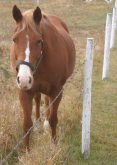A lot of work has gone into the new transportation regulations.
For cattle and bison, previous regulations were working well. Long trailer hauls to packing plants or feedlots in Canada and the United States recorded a success rates of more than 99.9 percent.
It’s possible to improve, but a lot of the culture around loading and unloading cattle has changed over the years.
Properly constructed loading chutes with flat entryways into trailers, along with bud boxes or similar tub systems for loading, has reduced the stress for cattle at the start of their journeys. A location with good loading facilities also has good unloading facilities.
Read Also

Beef check-off collection system aligns across the country
A single and aligned check-off collection system based on where producers live makes the system equal said Chad Ross, Saskatchewan Cattle Association chair.
Best practices mean producers and commercial truckers always make sure trucks are properly lined up to the facility with no gaps for feet to fall through. Ideally, cattle must exit or enter the trailer on a level surface.
I have noticed the increased use of gooseneck trailers have brought major improvements in hauling cattle. The vast majority of these trailers are aluminum, so they don’t rust, and the latches, sliders and divider gates work well. Cattle seem to load and unload a lot easier.
My one issue is with bigger tires being used at times. Even when designated as a ground load, the height above the ground is getting higher. In this instance, I suggest a low-set loading chute, especially if footing is not excellent. Cattle, especially pregnant cows or large bulls, do not like to jump down. This is where injuries can occur and if cattle are balking the height is a concern.
If you see such facilities, it might help to mention it to the owners. We all need help to improve gaps in our transportation practices.
Likewise, if facility operators see trailers in disrepair with poor footing, floors rotting or lights not working, they should say something. We need to help police each other to a certain degree.
We all must be vigilant of slips, trips and falls when loading or transporting cattle. If the frequency of these is too high, even at one or two percent, it must be investigated and solutions are necessary.
The two biggest changes coming in the new regulations for cattle or bison are confinement times, which are reduced from 48 hours to 36 hours, and rest times, which have increased from five hours to eight hours.
This mainly applies to situations where cattle are moving through Ontario or further to the east, or south into the United States.
A lot of research is being carried out on whether the unloading and reloading is actually more detrimental to cattle than longer hauls. I believe a lot of this research will be completed in 2021 and we may have some scientifically proven answers then.
Bison absolutely do not tolerate being unloaded and loaded in such a quick time frame. There will be injury consequences to that process, so bison must either get to where they are going within 36 hours or I imagine they simply will not be shipped.
At feedlots now, we try and acclimate cattle, which essentially means we get the new arrivals up and gently lead them to the water and feed supply in a stress-free way.
Those in the know say cattle look to us for guidance. This process takes a few minutes, but we know if we can get them drinking and eating regularly, sickness is reduced and there is less shrinkage.
That may become a key component if we use the rest stops as outlined. The recommended rest time is too short to properly acclimatize the cattle and nobody is sure what happens if sickness is detected at the rest stop.
There are electrolyte and amino acid products available that have been proven to reduce shrink and dark cutters. Perhaps those products need to be mandatory for cattle or bison shipped over certain distances and time frames.
Just as most people when they fly would much rather have a direct flight than have to catch several connections, cattle are the same.
For its part, the Canadian Food Inspection Agency must expedite border crossings as much as possible to cut down wait times, especially in severe heat. With RFID-tag reading capabilities there is almost no reason to unload and load cattle or any livestock at any border crossings if the paperwork is correct.
We have capable people in the cattle industry and their track record is very good. Eastern Canadians continue to pay more for western calves because they arrive in good shape and buyers like the end results.
As far as cattle and bison transportation goes, the old adage “if it ain’t broke, don’t fix it” might apply.
Let’s not get too excited about the changes until the new research comes out.
Meanwhile, improvements in transportation in my 30-plus years as a veterinarian have been impressive and we will continue to improve because of equipment, genetics, handling skills and medical science.
Overall, we should be proud of the levels we are achieving in the cattle industry but there is always room for improvement.
Roy Lewis works as a technical services veterinarian part time with Merck Animal Health in Alberta.

















